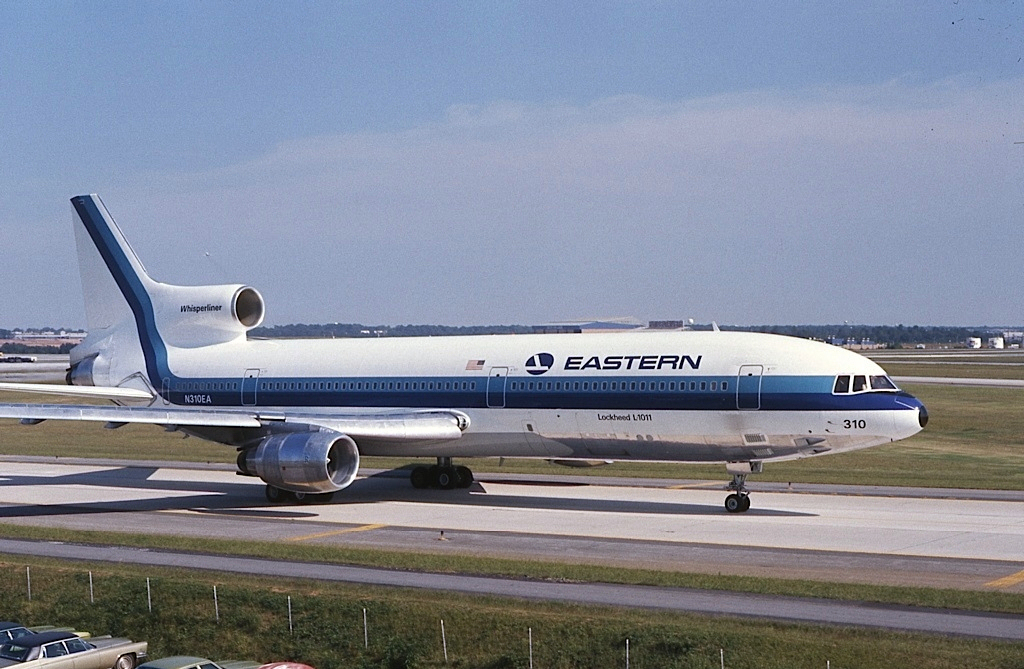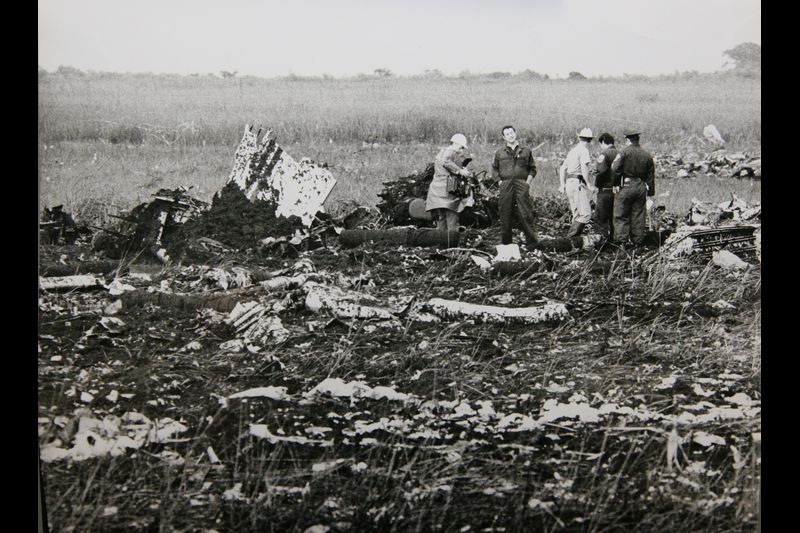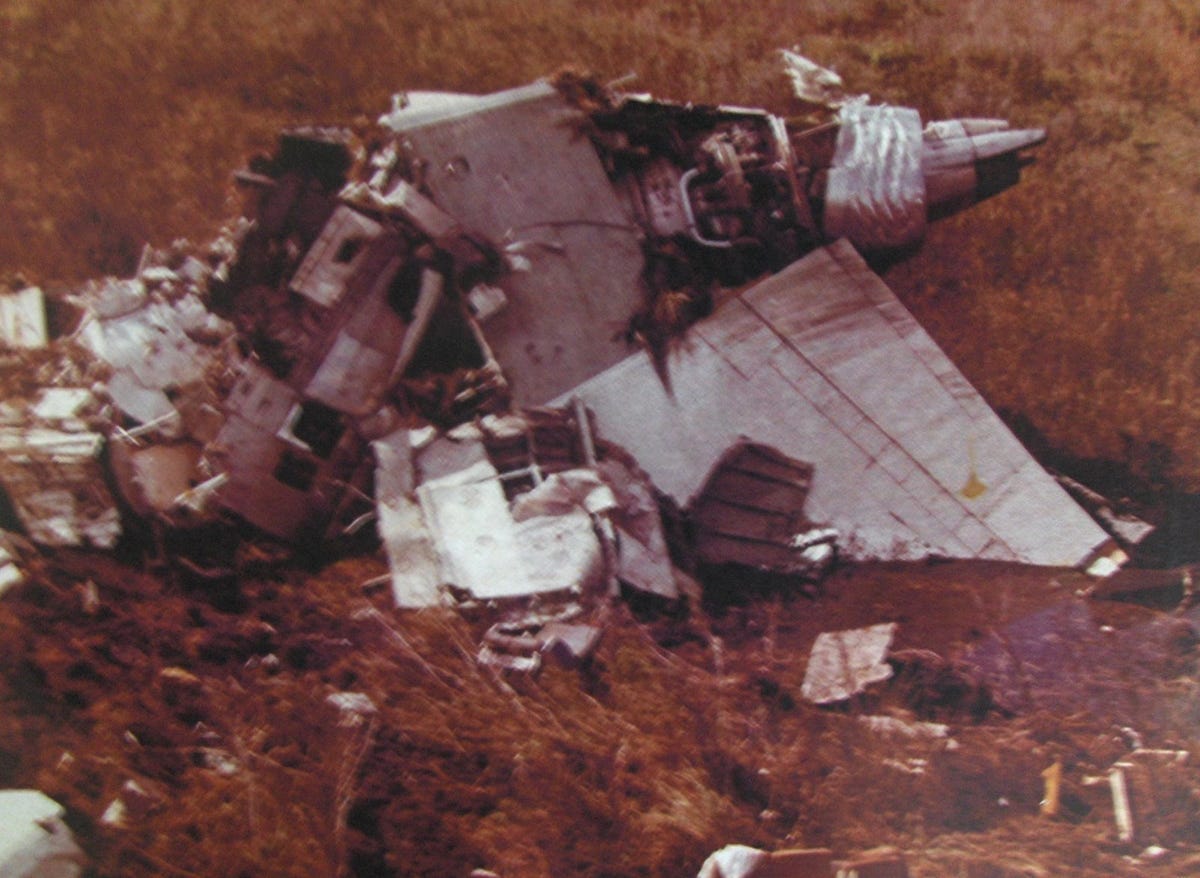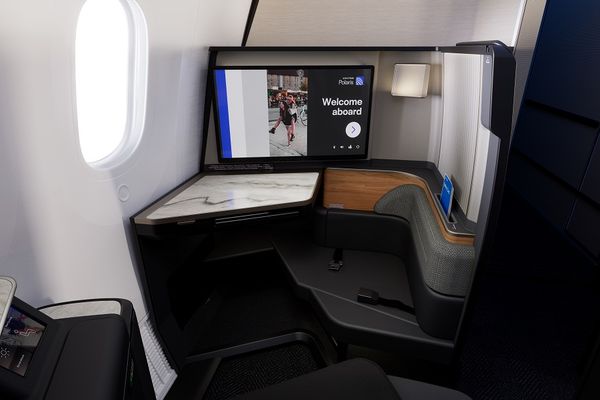Aviators owe much to the mariners who came before them. Both measure their speed in knots. A red light goes to Port, and a green one goes to Starboard, adorning ocean vessels and aircraft. Pan Am's authority-inspiring white uniform caps were borrowed from naval officers. The rank of captain and even the word "pilot" are derived from the legacy of those who went to the sea in ships.
With the transference of such a heritage comes a certain mystique as well. A quasi-romantic yearning for the wind and the sky, a profound respect for the power of nature. Certain rituals and superstitions were also passed on from those who once flew sails to those who would fly airplanes.
Pilots were prone to superstitions, such as the World War I-era proscription against taking pre-mission after one plot did not return after posing for his portrait. Or Second World War bomber crews who exchanged good luck charms before particularly daunting missions.

As aviators prodded ever outward toward the four quarters of the Earth, as did the sailors who came before them, they shared stories of their novel encounters at the edges of the map, seeing things few regular people ever would. A reverence for the mysterious developed, even amongst professionals whose careers were steeped in the latest modern technology.
Indeed, one such mystery famously emerged from the loss of the most advanced airliner of its time, a Lockheed L-1011 Tristar that crashed into the Florida Everglades on the blackest of nights in 1972. On the tragic evening of December 29, Eastern Airlines Flight 401 made its way from John F. Kennedy Airport in New York to Miami International Airport.
The wide-bodied jumbo jet was a technological marvel whose Inertial Navigation System (INS) could guide it to any point on Earth without needing ground-based aids. Its autopilot could fly it virtually hands-free, even to a Category IIIb landing in near-zero visibility. But on this night, a 30-cent bulb in a landing gear warning light would be its undoing.
Copilot Bert Stockstill was the pilot flying. Once he stabilized the large jet on the final approach for runway 9 Left, he asked for gear down. But when the captain reached over and moved the landing gear handle into the down position, the nose gear indicator light, a small green square that would confirm the landing gear had locked in the down position, did not illuminate. The crew cycled the gear, bringing it up and lowering it again. The nose gear indicator light stayed dark.

Captain Bob Loft, a 32-year veteran of Eastern Airlines with nearly 30,000 hours of flight time, informed the Miami tower that they would be breaking off their approach and requested a turn from the airport to work the problem. Miami's weather was good that night, with light winds, scattered clouds, and visibility.
Miami tower instructed Flight 401 to climb to 2,000 feet (610 meters) and contact Approach Control on a different frequency. Approach Control eventually gave them tums to the north and northwest, out over the dark Everglades National Park, the famous swampy wetland home to rare species like the manatee, American crocodile, and the elusive Florida panther.
Once they reached 2,000, Capt. Loft told Stockstill to engage the autopilot. Discussion between the two pilots turned immediately to the problem. Stockstill removed the indicator light and tried to fit it back into the panel. The small plastic square jammed.
Loft ordered the Flight Engineer, Don Repo, to descend into the electronics bay to visually verify the nose gear was down. The electronics bay, or E&E, was accessible through a hatch in the cockpit floor. From there, a small viewing lens allowed someone to spy on the landing gear compartment to confirm that the nose gear was down and locked.

What occurred at this point was pieced together by the accident investigators. Using both the audio from the cockpit voice recorder and the information from the flight data recorder, investigators believe that a descent of 100 feet (30 meters) that coincided with Loft's command to Repo to go down into the E&E bay was caused by the captain accidentally pushing the yoke when he turned in his seat to address his flight engineer.
The L-1011 autopilot had two distinct modes of operation: an Advanced Mode, in which commands were set by dialing in the desired parameters, such as altitude, heading, vertical speed, etc., or Basic Mode, known as "Control Wheel Steering." In Control Wheel Steering, the pilot could make an input with the yoke, such as a descent or a turn, and the autopilot would continue the inputted attitude until another input was made.
Control Wheel Steering was rarely used. But because going from one mode to the other did not constitute disengaging the autopilot, there was no warning to alert the crew to what would be an obvious change, given that the pilots themselves would have consciously made that input. They would then immediately see the resulting change in their flight instruments.
There was one warning of an altitude change that the entire crew of Flight 401 missed. This indication was a half-second chime that should alert the crew that the altitude had deviated more than 250 feet (76 meters) from its programmed altitude. But the speaker from which the chime emanated was positioned at the flight engineer's station, and with Don Repo below in the E&E bay, none of the pilots heard it. Investigators believed all three men were distracted by reinserting the landing gear indicator light into its panel.

At a certain point, Approach Control called to ask how things were progressing, to which Captain Loft responded they were ready to turn back toward the airport. The approach gave them a left turn to a heading of 180 degrees. Seconds after beginning the turn, the crew realized something was wrong. A brief exchange between the copilot and captain was the last thing recorded on the CVR.
- F/O: We did something to the altitude
- CAP: What?
- F/O: We're still at two thousand, right?
- CAP: Hey, what's happening here?
Two seconds later, the TriStar crashed at 197 knots and in a 28-degree bank to the left. One hundred-one people died, but miraculously, 75 survived, including eight of the ten flight attendants.
Local frog fisherman Bob Marquis was on an airboat in the Everglades that night and was the only witness to the crash. He raced into the darkness to help. The muddy waters of the swampy Everglades extinguished any fire immediately, and Marquis was led to the site only by the cries for help from the survivors. He proceeded to help the passengers away from the wreckage and saved numerous injured passengers from drowning. Ultimately, Coast Guard helicopters found the site after seeing Marquis's helmet light in the darkness.
Of the cockpit crew, First Officer Stockstill was killed instantly. Captain Loft died before being removed from the wreckage. Don Repo also survived the impact in the E&E bay but died the next day in the hospital. Only Eastern technical officer Angelo Donadeo, the jump seat occupant, survived.
Crashing into the swamp was both a blessing and a curse. The pitch-black darkness of the Everglades may have prevented the pilots from realizing they were dangerously close to the ground. Its soft bottom absorbed much of the energy of the crashing airplane, so much so that many parts - radios, avionics, the galley elevators, and ovens - were salvaged and later installed in other Eastern L-1011s.
The Everglades' murky waters extinguished an initial fire quickly. The surviving passengers found themselves mired in mud that sealed up wounds, preventing several severely injured persons from bleeding to death. But at the same time, eight survivors contracted life-threatening gas gangrene infections.
Flight 401 was the world's first crash of a jumbo jet and, at the time, the worst crash in U.S. history. When any such disaster occurs, the aviation industry is adamant about learning as much as possible. This one was no different. The official accident investigation concluded that, despite having four people in the cockpit, all were fixated on the gear indicator problem, and nobody was flying the plane or monitoring its progress.
From the investigation's conclusions came an industry-wide focus on Crew Resource Management, or CRM. CRM codified the division of labor in the cockpit, emphasizing teamwork and team leadership. More attention and training were given to formalizing communication between crew members and prioritizing routine and non-routine tasks. Such improved practices saved many future lives.

However, the legacy of Eastern Flight 401 did not stop there. In the months following the crash, mysterious occurrences began to take place on Eastern's other L-1011s. Aircraft No. 318 had received ovens salvaged from the accident aircraft. Flight attendants reported a cold presence in the galley, which was unnatural for the location where hundreds of hot meals were being prepared. Some sensed a feeling they were not alone. On a later flight, a flight attendant purports to have seen a glowing orb with facial features.
In his 1978 book, The Ghost of Flight 401, author John G. Fuller investigated these incidences after hearing of them on an international flight. Fuller relied on many third-party and anonymous sources, as Eastern employees directly involved were reluctant to go on the record, citing fears of job reprisals, such as being referred to mental counseling and a loss of flight status.
Galley Apparitions
A flight attendant entered the galley before a flight to find a flight engineer working on one of the ovens. "Just a little electrical problem. All fixed now," he told her. When she returned to the main cabin, she discovered a completely different flight engineer assigned to the flight. Perhaps the most renowned galleys occurred when a flight attendant saw a man's face reflected in an oven window.
Spooked, she retreated upstairs and brought another flight attendant down with her. The second employee also saw it. The two returned a third time with the flight's second officer, who recognized the face as that of Flight 401's Don Repo.

Passenger Cabin Specters
On a flight to Newark, the first class headcount was off by one. An Eastern captain was seated in one of the seats. Since the flight attendant doing the count had no deadheading crew listed for the flight, she approached the pilot. He didn't respond. She spoke again, and he silently continued to stare straight ahead.
A second flight attendant could illicit no response, either, so the two informed the cockpit of the crewman's mysterious behavior. The captain came back for a look and stopped dead in his tracks. He recognized the man in First Class as Captain Bob Loft. Right before the eyes of all three, the captain in the seat vanished. The plane was searched. Nothing was found.
A later incident involved a passenger seated next to a uniformed copilot who looked pale and unwell. The passenger called a flight attendant over. As they both tried to offer aid to the pilot, he also disappeared into thin air. The woman passenger became deeply upset by the event.
Cockpit Visitations
Not all the ghostly visitations were wrapped in ethereal silence. Some came with warnings, one of the electrical issues, another to beware of an engine fire. Perhaps the most significant cockpit visit of the ghosts of Flight 401 was the appearance of Flight Engineer Repo to a crew just entering the cockpit before a flight. Sitting at the flight engineer's station, he calmly informed the crew that there would never be another crash of an L-1011 and that his crew would see to it.

Over 18 months, these unnerving sightings continued aboard Eastern L-1011s, particularly on aircraft no. 318. Some employees turned to spiritualism, ouija boards, and seances for resolution. As reported in Fuller's book, most refused to speak about their experiences for fear of endangering their careers. As ghost stories and paranormal folklore are often passed from one group or location to another, new adherents enhance the impact of such legends by transferring them to different locations or populations, in essence, claiming the stories as their own.
This was not the case with Eastern 401. As the stories spread across the industry, it remained an Eastern phenomenon. But there was concern. There were other operators of L-1011s. One of them, Trans World Airlines (TWA), had a lending agreement with Eastern in which TWA L-1011s were loaned to Eastern during their peak months of summer travel up and down the East Coast, and Eastern would loan some of its L-1011s for east-west usage by TWA. Would the apparitions someday appear on TWA flights?
The L-1011 Safety Record
Overall, Lockheed TriStar had an exceptional safety record over a more than 25-year career as an employee of many airlines across the globe. Only two fatal accidents mar the record. In 1980, a Saudia Airlines TriStar reported a fire in the cargo hold after takeoff from Riyadh and returned to make a successful emergency landing. However, the inability of the crew to open the doors from the inside, combined with a 20-minute delay before rescue personnel were able to open them from the outside, led to the smoke inhalation deaths of all 163 on board. I
In 1985, Delta Air Lines Flight 191 encountered a microburst on the final approach to Dallas Ft. Worth Airport, crashing short of the runway. One hundred thirty-seven people died, and 25 survived. In 1992, a TWA L-1011 departed the runway after an aborted takeoff at John F. Kennedy Airport in New York. Though the TriStar subsequently caught fire and burned, all 292 passengers and crew evacuated the aircraft without serious injury.
Eastern Airlines ceased operations in January 1991 after years of labor strife and high debt. But true to the words of the ghosts of Flight 401, there was never another serious incident about an Eastern L-1011. Perhaps, after the demise of their beloved airline, the ghosts of Flight 401 have been released to continue their journey to other realms.
Whether any of these supernatural events will be considered factual most likely relies on individuals' beliefs. Corporations, machines such as airplanes, and high technology in and of itself tend not to be directed by superstitions or magical behavior. Still, while publicly scoffing at the reports of otherworldly activity in their cabins, Eastern Airlines is reported to have quietly removed the salvaged Flight 401 parts from their other aircraft.
Lufthansa Technik Unveils Major ACJ318 Elite Upgrade Program » JetBlue Expands Midwest Footprint with New Daily Service Between New York-JFK and Cleveland » How Drone Swarms Rewrote the Rules of Aviation »
Comments (0)
Add Your Comment
SHARE
TAGS
STORIES Eastern Air Lines Mystery Haunted Incident History Lockheed Martin L-1011 Florida MiamiRECENTLY PUBLISHED
 This Week in Aviation: The 10 Stories That Mattered Most
From major airline developments to aircraft updates and industry shifts, this weekly recap highlights the ten most-read aviation stories from the week of December 28.
INFORMATIONAL
READ MORE »
This Week in Aviation: The 10 Stories That Mattered Most
From major airline developments to aircraft updates and industry shifts, this weekly recap highlights the ten most-read aviation stories from the week of December 28.
INFORMATIONAL
READ MORE »
 Nearly 500 Flights Cancelled Following Venezuela Attack, Caribbean Airspace Closure
Hundreds of flights have been cancelled this morning after an overnight U.S. military attack in Venezuela left airspace in much of the Caribbean closed.
NEWS
READ MORE »
Nearly 500 Flights Cancelled Following Venezuela Attack, Caribbean Airspace Closure
Hundreds of flights have been cancelled this morning after an overnight U.S. military attack in Venezuela left airspace in much of the Caribbean closed.
NEWS
READ MORE »
 Why Airline Class Wars Will Intensify in 2026
The "Class War" of 2026 is no longer just about legroom; it is a calculated, multi-billion-dollar strategic pivot by Original Equipment Manufacturers (OEMs) and carriers to capture a "splurge-ready" traveller base that is increasingly opting for "one big trip" over frequent, low-cost hops.
INFORMATIONAL
READ MORE »
Why Airline Class Wars Will Intensify in 2026
The "Class War" of 2026 is no longer just about legroom; it is a calculated, multi-billion-dollar strategic pivot by Original Equipment Manufacturers (OEMs) and carriers to capture a "splurge-ready" traveller base that is increasingly opting for "one big trip" over frequent, low-cost hops.
INFORMATIONAL
READ MORE »



